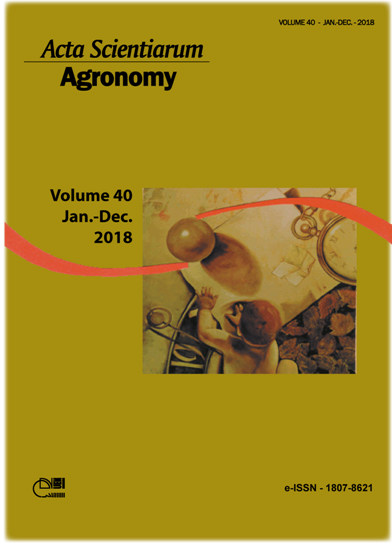<b>Evolution of nutrient availability in maturation phase of composting using proportions of different residues inoculated with <i>Beijerinckia indica
Resumo
Organic matter has low N content; however, organic matter may be enriched by inoculation with selected diazotrophic bacteria. The aim of the paper was to evaluate the effects of biofertilizer produced by mixing different types and proportions of organic matter inoculated with the diazotrophic bacteria Beijerinckia indica. The experiment consisted of plastic trays (6 L) containing 5 kg of three different types of organic matter (filter mud cake, earthworm compost, and crop residue) applied in the following proportions (v:v:v): 1-(5:0:0), 2-(4:1:0), 3-(4:0:1), 4-(3:2:0), 5-(3:1:1), 6-(3:0:2), 7-(2:3:0), 8-(2:2:1), 9-(2:1:2), 10-(2:0:3), 11-(1:4:0), 12-(1:3:1), 13-(1:2:2), 14-(1:1:3), 15-(1:0:4), 16-(0:5:0), 17-(0:4:1), 18-(0:1:4), 19-(0:3:2), 20-(0:2:3), and 21-(0:0:5). Samples were collected following inoculation with B. indica at 0, 10, 20, 30, and 40 days of the maturation phase. The chemical analyses were: pH (H2O), total C and N, available P and K, and exchangeable Na+, Ca+2, Mg+2. The treatments with the best results showed significant effects following the maturation phase. The exceptions were C and N, which presented only individual effects. In general, the organic matter proportions (5:0:0), (3:2:0), and (2:3:0) resulted in a significant increase in the availability of nutrients. Biofertilizers with optimal organic matter proportions may be used to produce organic substrates that are more effective and have the potential to be applied as alternatives to soluble NPK fertilizers.
Downloads
DECLARAÇÃO DE ORIGINALIDADE E DIREITOS AUTORAIS
Declaro que o presente artigo é original, não tendo sido submetido à publicação em qualquer outro periódico nacional ou internacional, quer seja em parte ou em sua totalidade.
Os direitos autorais pertencem exclusivamente aos autores. Os direitos de licenciamento utilizados pelo periódico é a licença Creative Commons Attribution 4.0 (CC BY 4.0): são permitidos o compartilhamento (cópia e distribuição do material em qualqer meio ou formato) e adaptação (remix, transformação e criação de material a partir do conteúdo assim licenciado para quaisquer fins, inclusive comerciais.
Recomenda-se a leitura desse link para maiores informações sobre o tema: fornecimento de créditos e referências de forma correta, entre outros detalhes cruciais para uso adequado do material licenciado.




















































